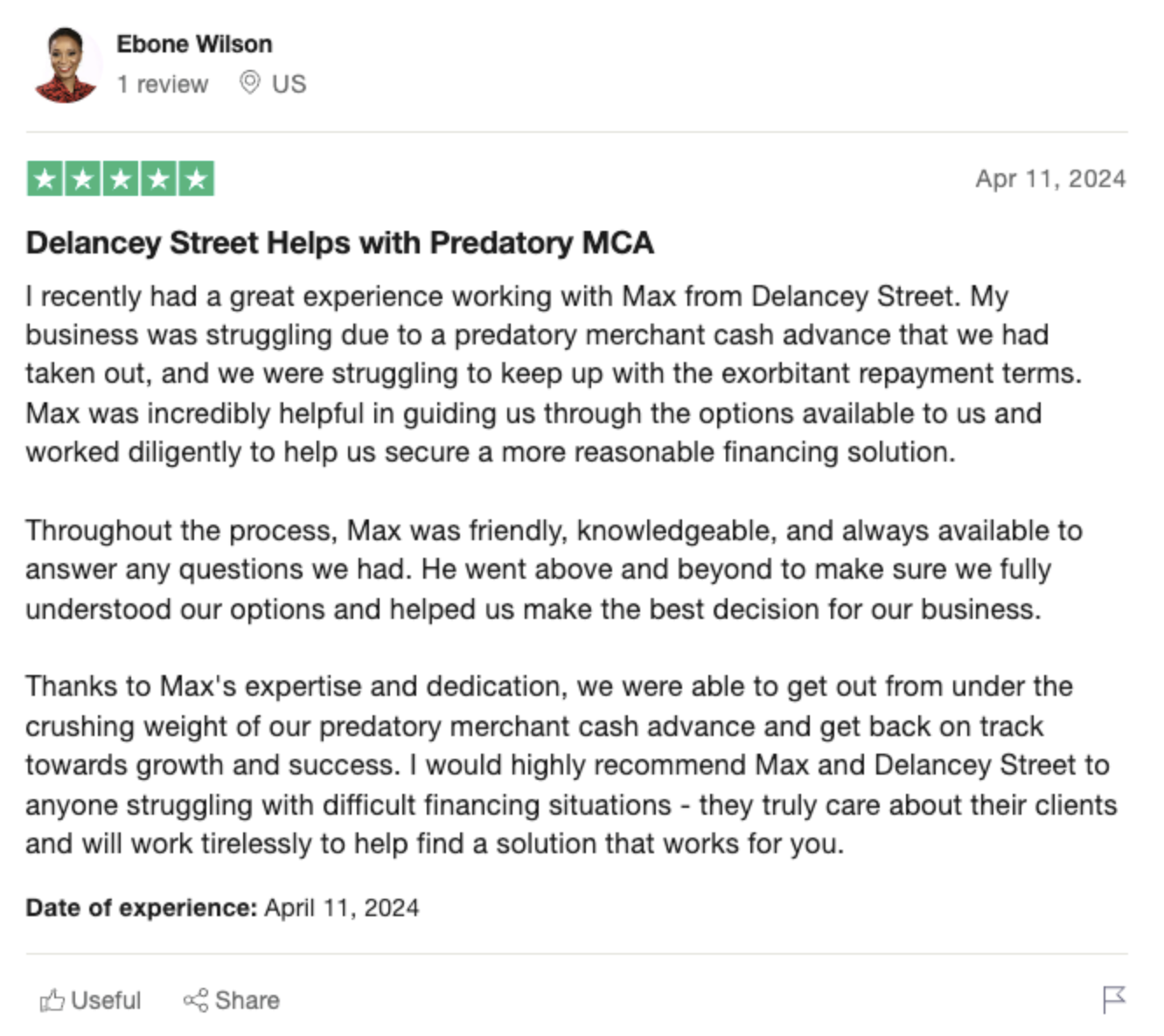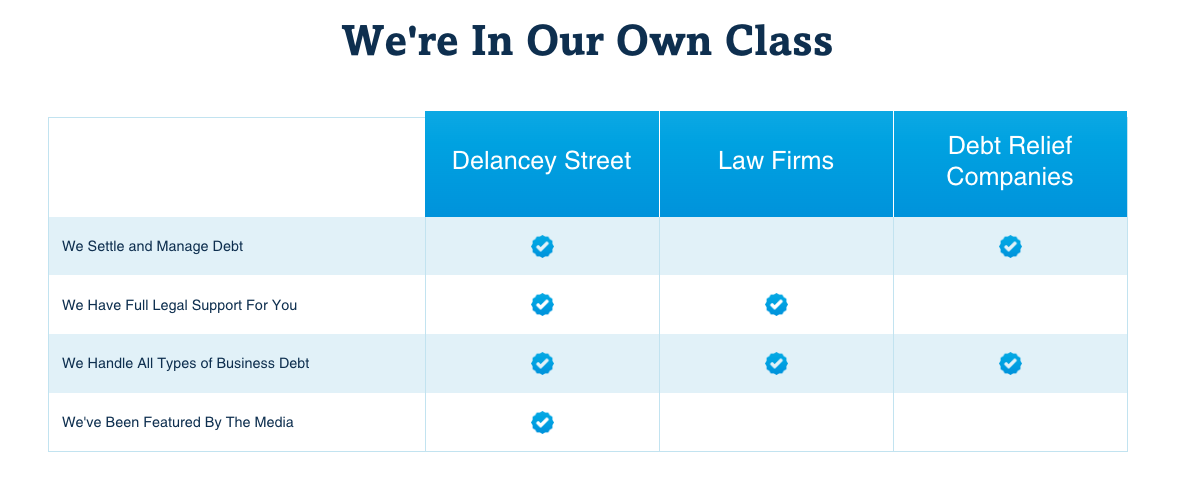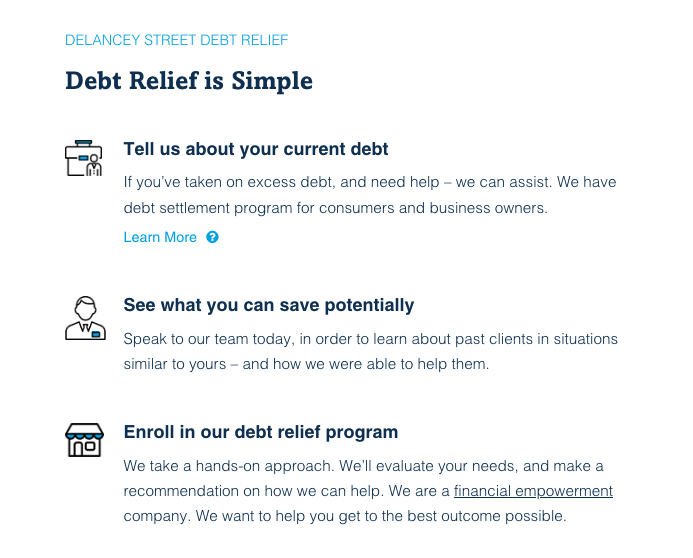Navigating Business Bankruptcy and Debt Settlement
Filing for bankruptcy or pursuing debt settlement can be daunting but necessary options for business owners facing financial hardship. When cash flow dries up and creditors come calling, it’s important to understand all your options so you can make the best choice for your company’s future. This article provides an overview of business bankruptcy and debt settlement – the pros, cons, defenses, and key factors to consider when weighing these debt relief strategies.
 -
-An Introduction to Business Bankruptcy
Business bankruptcy comes in several forms, each with varying eligibility requirements, processes, and outcomes. The most common bankruptcy options for businesses are Chapter 7, Chapter 11, and Chapter 13 filings.
Chapter 7 Bankruptcy
Also known as “liquidation bankruptcy,” Chapter 7 bankruptcy involves appointing a trustee to oversee liquidating the business’s assets to pay off as much debt as possible. Any remaining unpaid debt is discharged, providing the business with a fresh start.
Pros:
- Debt discharge – Remaining unpaid debts after liquidation are discharged. This provides a fresh start for the business.
- Asset protection – Certain assets are exempt from liquidation based on state law. Business owners may be able to retain exempt assets.
- Low cost – Attorney fees for Chapter 7 tend to be lower compared to other bankruptcy chapters.
Cons:
 -
-- Business closure – The business must cease operations and liquidate assets. There is no option to reorganize and continue operating.
- Collateral loss – Secured creditors can repossess collateral property not exempt from liquidation.
- Tax implications – Business owners may owe income tax on liquidated assets used to pay creditors.
Chapter 7 bankruptcy provides considerable debt relief, but at the cost of losing your business. It’s a clean break option when reorganization is not feasible. However, the legal and filing costs of Chapter 7 create barriers for low-income business owners.
Chapter 11 Bankruptcy
Chapter 11 filings aim to reorganize and restructure the business’s finances under court supervision, without liquidation. The business puts together a court-approved reorganization plan laying out how it will repay creditors over time.
Pros:
- Business preservation – The business can continue operating throughout the reorganization process.
- Creditor negotiation – More flexibility to negotiate repayment plans with creditors vs. Chapter 7.
- Debt discharge – Some unpaid debt may still be discharged despite reorganization.
Cons:
- Complex process – Extensive legal and accounting expertise needed to develop an acceptable reorganization plan.
- Ongoing court supervision – All financial decisions subject to court approval throughout the reorganization process.
- Creditor challenges – Unhappy creditors can dispute reorganization terms and file legal challenges.
For businesses with a viable path forward, Chapter 11 provides an opportunity to restructure finances and emerge healthier without liquidating assets. But the complex legal process requires expertise that makes it expensive.
 -
-Chapter 13 Bankruptcy
Like Chapter 11, Chapter 13 allows reorganizing finances but is only available for small businesses below debt thresholds. The business proposes a 3-5 year repayment plan to creditors.
Pros:
- Increased debt eligibility – Higher debt limits than personal bankruptcy filings.
- Business preservation – Avoids liquidation and allows continuing operations.
- Flexible payments – Repayment plans adjusted as needed to business cash flow.
Cons:
 -
-- Strict oversight – All income must go toward plan payments throughout the 3-5 years.
- Creditor challenges – Unhappy creditors can dispute repayment terms.
- Conversion risk – Failing to maintain payments can convert the case to a Chapter 7 liquidation.
For small businesses, Chapter 13 can provide time to restructure and repay debts without liquidating the business. But strict oversight and high failure rates make it a challenging path.
Key Factors in Choosing Business Bankruptcy
- Business viability – Can the business realistically continue operating and generating income after reorganizing? Non-viable businesses are better suited for Chapter 7 liquidation.
- Asset protection – What assets are exempt from liquidation under state law? Chapter 7 allows protecting exempt assets.
- Cost – Chapter 7 legal fees are generally the lowest, followed by Chapter 13 then Chapter 11. Factor in what you can realistically afford.
- Debt size and type – Chapter 13 is limited to businesses below $2.7 million in debt. The composition of secured vs unsecured debt also influences options.
- Creditworthiness – Filing may provide relief, but will also devastate your business credit for years. Factor this into reorganization plans.
An Introduction to Debt Settlement
Debt settlement, also called debt negotiation or arbitration, is an alternative to bankruptcy for resolving unmanageable business debts. It involves working with a third party negotiator to settle outstanding debts for less than you owe.
The debt settlement process
- You stop making payments to creditors and instead save money in a secure account.
- A negotiator reaches out to creditors and offers lump-sum settlements at reduced balances.
- Creditors accept the deals and agree to forgive the remaining balances owed.
- You pay the negotiated settlements from the funds you’ve accumulated in your secure account.
Pros
- Avoid bankruptcy – Settling debts avoids the risks and stigma of filing bankruptcy.
- Pay less than owed – Creditors agree to reduced balances, sometimes 50% less.
- Flexibility – You control which debts to settle first and settlement terms.
- Operational continuity – Your business can continue operating while settling debts.
Cons
- Damaged credit – Missed payments while saving up will devastate your credit score.
- Potential lawsuits – Creditors may sue for the full amount before accepting settlements.
- Tax implications – The IRS may count forgiven debt as taxable income.
- High fees – Reputable negotiators charge 15-25% of settled debt amounts.
- No guarantees – Creditors can refuse to settle, leaving you without options.
Key Factors in Debt Settlement
- Available funds – You need cash on hand to fund lump-sum settlements. This requires disciplined saving over many months.
- Debt composition – Debt settlement works best for unsecured debts like credit cards, personal loans, and vendor bills. It’s more difficult for secured debts.
- Settlement risks – Research negotiators thoroughly. Unethical ones take fees without settling debts. Reputable firms charge only after settling.
- Tax planning – Consult a tax professional to understand potential tax liability on forgiven debt. You may be able to avoid this.
- Creditworthiness – Your credit score will be damaged but can recover over time. Weigh this vs. long-term bankruptcy impact.
Making the Best Choice for Your Business
There’s no one-size-fits-all answer to whether bankruptcy or debt settlement is the best option. It depends entirely on your specific business’s situation. Here are some key questions to help determine the right path:
- What are your long term goals? If you want to preserve the business, bankruptcy liquidation is less feasible.
- How viable is ongoing business operations? If not viable, the clean break of Chapter 7 bankruptcy may be preferable.
- What is your current cash flow? This dictates what repayment plans or settlements are realistic.
- How much debt can be discharged vs. restructured? Chapter 7 discharges more unpaid debt than reorganization options.
- What is the business asset composition? Assets exempt from liquidation can be retained in Chapter 7.
- What is your personal risk tolerance? Bankruptcy inflicts damage on your personal credit as well as business credit.
- What are your tax planning considerations? Tax obligations differ greatly between liquidation and restructuring.
Answering these questions will provide clarity on whether bankruptcy or debt settlement aligns better with your goals, assets, debts, cash flow, credit needs, and tax situation. Each comes with pros and cons. Working with qualified legal and financial advisors can help you make sense of the complexities of both to chart the best path forward for your business.







